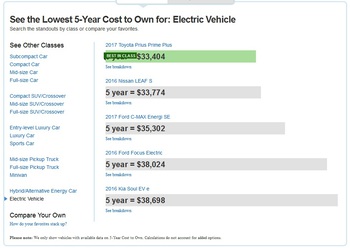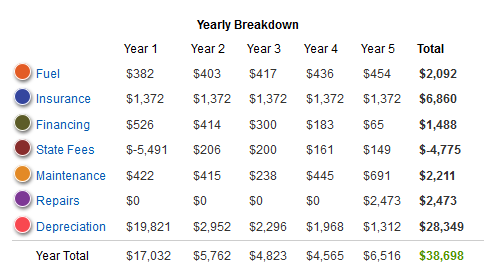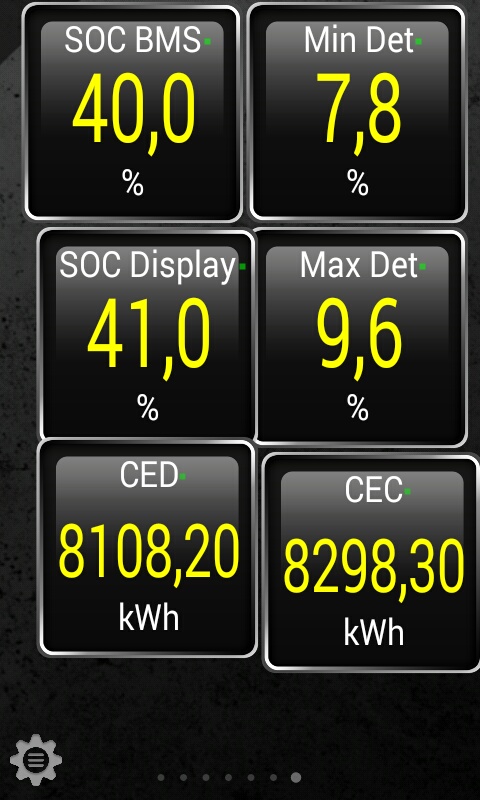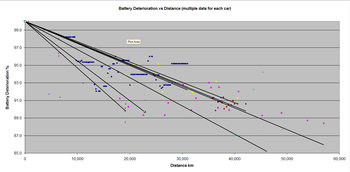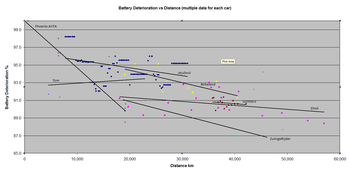Here's the latest deterioration graph showing the battery data I am collecting.
This graph is showing multiple data and trend lines for 4 cars from here, and 4 of the cars being tested by the AVTA at Phoenix.
Our 4 cars are in order from the top - Birkeland, GizmoEV, Elmil and JejuSoul. These measurements use OBD data.
We know it's valid for these cars because we have the official SOH data. See the post immediately before this.
(Note - there's a 10% buffer at the top. After two year's our cars are still SOH 100% because it is only that buffer that has been lost)
I am happy because after a mild winter my car hasn't shown any new deterioration, and my trend line has now almost caught up with Elmil.
Another month and I could be in the top 3!
The 4 cars being tested by the AVTA at Phoenix are averaged together to form one trend line. These measurements use lab data.
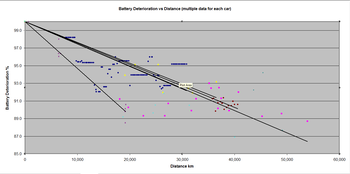
The 4 cars being tested by the AVTA at Phoenix are losing battery capacity twice as fast as our cars. But this is not a simple climate effect. My car is in a much warmer climate than Elmil's and yet is performing identically. We also have reports from drivers in Phoenix who are not suffering from battery deterioration. My assumption is that the cars being tested by the AVTA at Phoenix are being charged to 100% and then left in the sun. It is the combination of charging to 100% SOC and 40C heat that is damaging those cars.
The 4 cars doing best in my data set are all about two years old. They have all been owned by a single owner who has looked after the battery by not leaving the car at 100% SOC for long periods. There are a few ex-demo cars that are not doing as well, even though the current owner looks after the car. It seems possible that cars left at a dealer's lot for a year were left at 100% SOC and suffered quite heavy deterioration, even though they drove little.
This graph is showing multiple data and trend lines for 4 cars from here, and 4 of the cars being tested by the AVTA at Phoenix.
Our 4 cars are in order from the top - Birkeland, GizmoEV, Elmil and JejuSoul. These measurements use OBD data.
We know it's valid for these cars because we have the official SOH data. See the post immediately before this.
(Note - there's a 10% buffer at the top. After two year's our cars are still SOH 100% because it is only that buffer that has been lost)
I am happy because after a mild winter my car hasn't shown any new deterioration, and my trend line has now almost caught up with Elmil.
Another month and I could be in the top 3!
The 4 cars being tested by the AVTA at Phoenix are averaged together to form one trend line. These measurements use lab data.

The 4 cars being tested by the AVTA at Phoenix are losing battery capacity twice as fast as our cars. But this is not a simple climate effect. My car is in a much warmer climate than Elmil's and yet is performing identically. We also have reports from drivers in Phoenix who are not suffering from battery deterioration. My assumption is that the cars being tested by the AVTA at Phoenix are being charged to 100% and then left in the sun. It is the combination of charging to 100% SOC and 40C heat that is damaging those cars.
The 4 cars doing best in my data set are all about two years old. They have all been owned by a single owner who has looked after the battery by not leaving the car at 100% SOC for long periods. There are a few ex-demo cars that are not doing as well, even though the current owner looks after the car. It seems possible that cars left at a dealer's lot for a year were left at 100% SOC and suffered quite heavy deterioration, even though they drove little.



